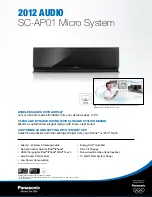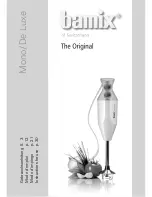
Q u i c k S t a r t G u i d e
5
The Basics
2. The Basics
The Traditional Split-Console Approach
Bank 1 and Fader Bank 2 as two separate
mixing consoles, where Fader Bank 1 is used
for tracking and Fader Bank 2 is used for
monitoring and mixdown.
Three Things to Keep in Mind
As you become familiar with the Digital
8•Bus, you’ll find it helpful to keep these three
questions in mind at all times:
1. What Fader Bank is selected?
2. What channel is selected?
3. What is the V-Pot assignment?
In 90% of the cases, if something isn’t work-
ing as you expect, it is because one of these
three settings isn’t where you intend it to be.
Tracking
The first 24 channels (Fader Bank 1) are
used for tracking; that is, to record instruments
and voices onto individual tracks of the multi-
track recorders (refer to Figure 4 on the next
page). Microphones and instruments are directly
connected to the input jacks on channels 1–24,
and their signals are assigned to Tape Outputs
1–24 (
and not to the L-R bus
). The Tape Outputs
on the Digital 8•Bus are connected to the
inputs of the multitrack recorders where the
instruments and voices are recorded on tape
(or hard disk in the case of a Hard Disk
Recorder or DAW).
Fader Bank 1
Channels 1-24
Mic/Line
Tracking
Channels 1-24
Channels 25-4
8
FX Return 1-1
6; ALT Return
1-8
Groups 1-8; M
IDI 1-8; Bus 1
-8
Fader Bank 2
Channels 25-48
Monitor/Tape In
Mixdown
Fader Bank 3
FX Return 1-16
ALT Return 1-8
Fader Bank 4
Virtual Groups 1-8
MIDI Controllers 1-8
Bus 1-8 Masters
Figure 3. The Split Console
Before we go any farther, we want to
present a concept that might help you
understand the Digital 8•Bus a little better.
Once you grasp this concept, you will begin to
understand the real beauty and power hidden
beneath the surface of this console.
The Digital 8•Bus has four layers of faders,
or fader banks, which can be individually
accessed using the select buttons in the Master
Fader/Bank Select Section. All four banks
operate simultaneously, but only one bank is
accessible at a time.
Fader Bank 1 = Channels 1–24
(1–24 MIC/LINE button)
Fader Bank 2 = Channels 25–48
(25–48 TAPE button)
Fader Bank 3 = Internal Effects Returns
FX 1–16, ALT RETurns 1–8
( 49–72 EFFECTS button)
Fader Bank 4 = Virtual Groups 1–8, MIDI
Controllers 1–8, Bus 1–8 Masters
(MASTERS button)
This architecture provides a total of 56
inputs, with Fader Banks 1 and 2 providing 48
inputs, and the 8 ALT Returns in Fader Bank 3
providing another 8 inputs.
One of the primary applications that the
Digital 8•Bus was designed for is multitrack
recording (up to 24 tracks). This involves
tracking and monitoring, bouncing, over-
dubbing, and mixdown. You can think of Fader







































